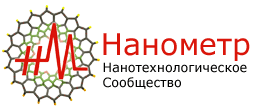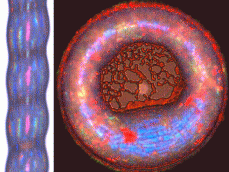12 июня состоится бесплатный вебинар по применению флуоресцентных зондов для визуализации живых клеток с последующим формированием цифровых изображений.
The discovery of green fluorescent protein a half century ago heralded a new and explosive era in microscopy, forever changing the landscape for biology imaging. The ability to fuse a genetically encoded fluorescent probe to an almost-unlimited variety of proteins has enabled scientists to investigate signaling pathways and the movement of intracellular proteins in living cells with unprecedented detail, particularly when coupled with powerful widefield fluorescence and confocal microscopy techniques. Today, using the expanded selection of probes now available, researchers can even monitor multiple proteins simultaneously, in real time. This webinar will investigate how fluorescent protein probes are currently being utilized for live cell imaging, with a focus on applications in cancer research and where newly developed probes might take us in the near future.
During this webinar, our panel of experts will:
- Outline the current advances in fluorescent protein probes
- Discuss how fluorescent probes are currently being used to image intracellular processes in live cells across a range of cancer research applications
- Investigate the potential of new probe technology such as biosensors, photoswitchable probes, and probes emitting in the far-red and infrared portions of the spectrum
- Answer your questions live and in real time!
Speaker Bios
Alan Waggoner, Ph.D.
Carnegie Mellon University
Pittsburgh, PA
Dr. Waggoner pursued his Ph.D. studies at the University of Oregon, followed by postdoctoral training at Yale University in New Haven, Connecticut. He is currently leading the Molecular Biosensor and Imaging Center into creating a novel sensor unit technology for a broad class of biosensors. This technology is designed to provide a very powerful, and almost generic, tool for detecting protein interactions on and inside living cells. Dr. Waggoner's research group also creates fluorescence-based detection systems for biology and biotechnology. The cyanine dye fluorescent labeling reagents developed in the laboratory have become widely used in industry and academic research for multicolor analysis of proteins, nucleic acids, cells, and tissues by imaging and flow cytometry. His group is also developing new fluorescent reagents to monitor cellular electrical potential and ion fluxes to study the cardiac function of living mammalian hearts.
W. E. Moerner, Ph.D.
Stanford University
Stanford, CA
Dr. Moerner is the Harry S. Mosher Professor of Chemistry and professor, by courtesy, of applied physics. He conducts research in physical chemistry of single molecules, biophysics, nanoparticle trapping, and nanophotonics. Dr. Moerner earned three Bachelor's degrees from Washington University in 1975 and Master's and doctoral degrees from Cornell University in 1978 and 1982. From 1981 to 1995, he was a research staff member at IBM, receiving two IBM Outstanding Technical Achievement Awards. Dr. Moerner was guest professor of physical chemistry at the Swiss Federal Institute of Technology from 1993 to 1994 and professor and distinguished chair in physical chemistry at the University of California, San Diego from 1995 to 1998, the year he joined the Stanford faculty. He spent time as the Robert B. Woodward Visiting Professor at Harvard University in 1997–1998. He was elected fellow of the American Physical Society in 1992 and received the society's Earle K. Plyler Prize for Molecular Spectroscopy in 2001 and the Irving Langmuir Prize in Chemical Physics in 2009. His other elected fellowships include the Optical Society of America, the American Academy of Arts and Sciences, the Australian Academy of Sciences, and the American Association for the Advancement of Science. He was elected member of the National Academy of Sciences in 2007, received the Pittsburgh Spectroscopy Award in 2012, and received the Wolf Prize in Chemistry (with Allen Bard) in 2008.
Marcel Bruchez, Ph.D.
Carnegie Mellon University
Pittsburgh, PA
Dr. Bruchez received a B.S. in chemistry from the Massachusetts Institute of Technology, and his Ph.D. in physical chemistry from the University of California at Berkeley. As a graduate student, he modified quantum dots—nanometer-sized crystal particles—so that they could be used to tag proteins and label cells. Following graduate school, he founded Quantum Dot Corporation, which grew these materials into a significant and commercially successful tool for single-molecule biological detection and for multicolor analysis of cells, and was ultimately acquired by Invitrogen Corporation (now Life Technologies). At Carnegie Mellon University, Dr. Bruchez investigates the limits of fluorescent microscopy and fluorescent probes at the National Technology Center for Networks and Pathways, a national resource for biological probe development, and is applying these tools to the study of how protein synthesis, trafficking, and degradation is coordinated and regulated in biological systems. Dr. Bruchez holds 23 patents, has published 39 peer-reviewed papers, and has received much recognition for his work. Science recognized his development of quantum dots for biological detection as one of the Top Ten Scientific Innovations of 2003. In 2006, Dr. Bruchez received the Lord Rank Prize for Optoelectronics for “realization of quantum dot nanocrystals as biological labels.”
Moderator: Sean Sanders, Ph.D.
Science/AAAS
Washington, DC
Dr. Sanders did his undergraduate training at the University of Cape Town, South Africa, and his Ph.D. at the University of Cambridge, UK, supported by the Wellcome Trust. Following postdoctoral training at the National Institutes of Health and Georgetown University, Dr. Sanders joined TranXenoGen, a startup biotechnology company in Massachusetts working on avian transgenics. Pursuing his parallel passion for writing and editing, Dr. Sanders joined BioTechniques as an editor, before joining Science/AAAS in 2006. Currently Dr. Sanders is the Editor for Custom Publishing for the journal Science and Program Director for Outreach.

